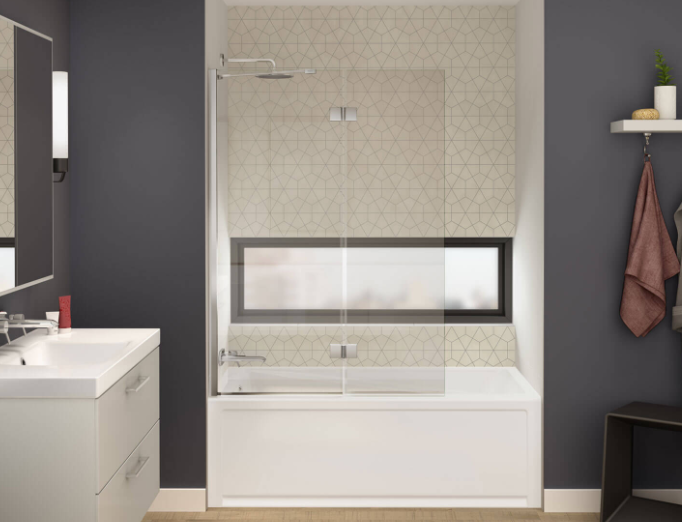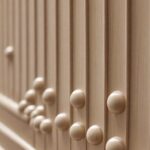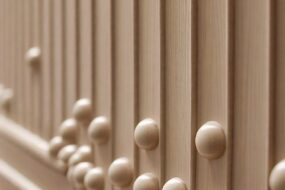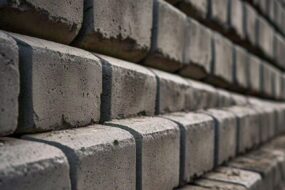
The shower doors are rather critical in the design of bathrooms and they have the functionality of a door and the attractiveness of a shower curtain. It is possible to change the appearance and functionality of your bathroom facility through the right decisions. Hundreds of shower doors are on offer in the market today, which is why you need to look at the following factors when shopping for one. This article is useful as it gives information on the various types of shower doors, the materials utilized and how to maintain the doors.
Types of Shower Doors
Sliding Shower Doors
People consider sliding shower doors the best for bathrooms with little or no extra space. These doors work through a track, and thus they can open while they do not necessarily require more space. Integrated in shower-tub arrangements or in single showers, the doors slide perfects and are space-efficient. Some are made from the two or more panels which have one sliding in front of the other. This setting is disadvantageous in small wash rooms especially where space of the wash room is a limiting factor. But to make a difference between these two tracks, one may have to make sure that the tracks are always clean in order to facilitate easy operation.
Hinged Shower Doors
People also refer to hinged doors as pivot or swing doors, and the only difference between them and a normal door is that hinged doors swing outwards. Mounted on the shower wall or frame with hinges, they combine the elegant appearance and the operation’s convenience. These doors are preferred in those bathrooms that have much larger spaces on the interior. Where you don’t have to worry about lack of space. Most of them can offer continuity with a smooth transition and aesthetic outlook, which a number of homeowners with minimalist tastes find doubly appropriate. Compared to sliding doors hinged doors have fewer points of contact and thus, less point of mechanical failure. But they have a consideration that they need adequate space so that the door can open to a fully extended position.
Bi-Fold Shower Doors
Bi-fold shower doors feature hinges that fold directly towards the shower unit, saving space. These doors consist of two hinged panels, allowing them to collapse inwards when opened. The design merges hinged and sliding doors into one system. Bi-fold doors make it possible in the case of small bathroom spaces. It has been designed best for small showers due to its compact size and it is very easy to maintain. But they can limit oneself with the appearance of the doors, which can be less aesthetic than frameless or hinged doors.
Frameless Shower Doors
Non-frame shower doors provide aesthetically pleasing appearance in light of the fact that they do not require metal support structures. Constructed out of ½-inch glass as opposed to ⅜-inch glass, these doors stay for panels within hefty hardware. Some designs do not rely on frames that make the options of installing. The enclosures flexible in that aspect in order to fit the layout of the shower. They give a clear and spacious look thus making small bathrooms to look larger since they have fewer hindrances. Frameless doors also cost quite a bit more than framed doors, but many users find their aesthetic appeal and durability worth the expense.
Framed Shower Doors
Framed shower doors are more common and cheaper in comparison with framed shower doors. These doors have metal to enclose the glass panels to ensure that they are strong enough and could withstand normal usage. Framed doors are as well produced in different styles and complete with definite finishes. So bathroom designs can easily correspond with the used doors. They cost less and are easier to install compared to frameless doors; however, the frame tends to accumulate dirt and dust, so you should clean it regularly. In conjunction, the metal frame could interfere with the relative slimness of the design in a somewhat manner.
Materials Used for Shower Doors
Tempered Glass
Pioneers construct shower doors using basic tempered glass, a type of safety glass that they heat strengthen. It is common knowledge that when it breaks, it separates into small, barely sharp edges thereby minimizing on the occurrences of injuries. Tempered glasses come in many thicknesses and the thickness affects how good it is in terms of strength and the feel that it gives. It also comes in clear, frosted or patterned type depending on preferences of the people who want to use it.
Acrylic
Acrylic shower doors come in a lightweight and cheaper variety compared to glass ones. Homeowners mainly use these doors in projects that are not very expensive or in cases where installation needs to be temporary. Compared to glass, manufacturers find acrylic to be more versatile in shaping, making it unlikely to crack under pressure. However, it is somewhat easy to scratch, and it can also fade over time, which means homeowners need to replace it often. Altogether, thanks to its affordability and light weight, acrylic shower doors are a popular choice.
Frosted or Textured Glass
Frosted and textured glass is used more where people wish to have more privacy in the shower area. These types of glass make the view partially obscured but admit light to the bathroom environment. Hence creating an open feel to the room while at the same time offering privacy. Frosted glass comes in different varieties and hence the various designs which in effect mean various degrees of transparency. Similarly to the textured glass, it serves the same purpose. But it has patterns that can ornaments the bathroom more effectively.
Maintenance Tips for Shower Doors
Maintenance can also be defined as the ways of making sure that shower doors are not only useful but also stylish for years. Daily cleaning is necessary in order to avoid soap residue as well as hard water deposits on the glass. Simply a solution of vinegar and water is suitable wash glass doors without leaving streaks or soap scums on them. After every shower, someone should preferably wipe the glass with a squeegee to avoid water marks and maintain clear glass.
These tracks and hinges should therefore be checked regularly so as to identify the time they need to be repaired or replaced. Sliding door tracks are a problem since one or both ends of the track can accumulate dirt which prevents smooth motion. It is necessary to clean the tracks at least in two-three weeks and this way the doors will slide perfectly. Hinged doors do come with a certain design that makes several of its traits likely to shake off balance to some extent. This is especially evident in situations. Where one or some screws usually found in this hinged door are loose. Or where one or some of the various parts of this hinged door are worn out in some way.
Check the rubbers around the shower doors for signs of perish. This will ensure that you do not damage the other seals. And thus no leakage will occur through that channel as the seals act as a waterproof barrier. When it comes to frameless doors, it is necessary to inspect the silicone seal that connects the glass. What is important to note here is that these seals should remain in tact to ensure water does not seep. The rest of the bathroom, especially after the shower is in use.
Conclusion
Selecting shower doors involves certain steps that include the size of the bathroom. The style that is preferred and the functionality of the shower door. The four-door types include patented sliding doors, sliding doors, frameless doors and lift doors with each of them having its own benefits. Another important feature is the choice of material. How to make a tabletop – from tempered glass or acrylic is also significant for the table’s durability and appearance. In the event, you properly care for as well as maintain your shower doors. You can incorporate it well into your bathroom’s design, and it will serve you for quite some time.
.










One reply on “Shower Doors: A Comprehensive Guide to Choosing the Best Option”
[…] pan are the basis of the shower stall – they help to drive the water to the drain and do not let it leak. They are […]